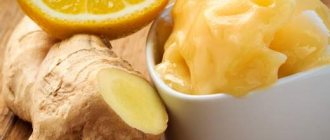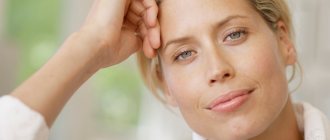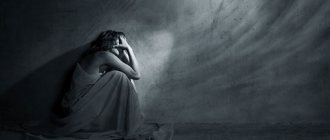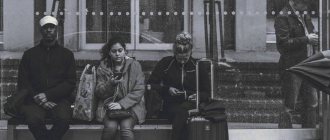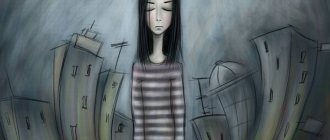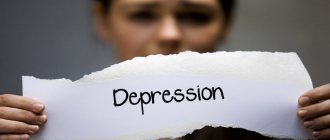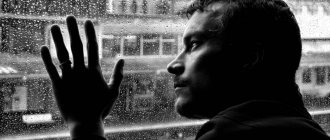Why does autumn blues occur and can it be avoided?
Autumn is the period of sunset.
A time when there is less light and heat, the length of the day is shortened, and wildlife is preparing for seasonal changes. This is a natural process of transition from one state to another and vice versa. And the name of this process is biorhythms. Man, being part of all life on Earth, is subject to natural biorhythms, solar and lunar phases, magnetic fields and changes in temperature and seasons. A striking example of a person’s dependence on biorhythms is flights with sudden changes in time zones and climate, when from frozen December we fly to hot Thailand.
But don’t rush to diagnose yourself with depression. This is a serious mental illness, it has nothing to do with the time of year, but the blues do happen in the fall. Reduced activity and stress during the autumn-winter period are common to everyone. And therefore, slight fatigue and even a slightly worse mood should be perceived as something normal, but not plunge into this state headlong. Most often, it affects weather-dependent and anxious people, as well as those who have surges in blood pressure and headaches or disturbed sleep. As the body undergoes restructuring, all these symptoms intensify. Chronic diseases are also getting worse, which means your health is getting worse.
To help yourself as soon as possible, just pull yourself together and follow a few psychological recommendations. And sometimes it’s worth going to the pharmacy, because autumn apathy may hide a lack of vitamins. Who is exposed to autumn changes? Sadness on gray days happens mainly to those who are not satisfied with their life. Dampness and dankness provide an additional reason for irritation and nervousness, giving rise to sad thoughts or concerns about the future.
Electroconvulsive therapy
Currently, one of the most effective non-drug methods of treating depression is electroconvulsive therapy, which is used both as an independent method of treatment and in combination with other methods of therapy (Nelson A.I., 2002).
Electroshock therapy methods have been used since ancient Greece. In the temples of Asclepius, depression was treated with electric snakes. In the Middle Ages, it was believed that a strong shock to a patient could bring him out of a state of depression.
Treatment of depression with electric shock was recommended by Hill in 1814 (commotions electriques) (Kempinski A., 2002). Particular interest in this method of treating depression was noted in the early forties of the twentieth century. Electroconvulsive therapy is now generally recognized to be highly effective in treating depression.
It is difficult to overestimate the importance of electroconvulsive therapy for those patients for whom pharmacological treatment is contraindicated (pregnancy, certain somatic diseases, etc.), as well as if it is necessary to overcome depression resistant to other types of therapy.
Typically, to obtain a therapeutic effect from electroconvulsive therapy, about 8-10 shock discharges are required at a frequency of 3 sessions per week.
Subject to monitoring the condition of patients, it is possible that they can be treated with ECT on an outpatient basis or as a day treatment for depression in a hospital.
In general, the combination of ECT with antidepressants is not recommended; the use of small doses of tranquilizers is possible.
Complications of electroconvulsive therapy include spinal injury and circulatory disorders, states of confusion after convulsive attacks, as well as periods of anterograde and retrograde memory impairment have been reported. The latter can persist for a month after the end of ECT. ECT causes a temporary rise in blood pressure (often to quite high levels) and increases the heart rate.
Relative contraindications to ECT include coronary heart disease and arrhythmias, as well as some location of the brain tumor.
Most patients are afraid of this method of therapy, so the importance of professional psychotherapeutic work with the patient, as well as its subsequent support during the ECT therapy itself, should be emphasized.
Adaptogens in autumn
During the off-season, the body produces more cortisol, the stress hormone. Adaptogens neutralize the effect of cortisol at the cellular level and restore normal functioning of the body. They activate metabolic processes, improve the supply of oxygen to tissues, stimulate the heart, tone the walls of blood vessels. Based on the name of the group of drugs, they are needed to help the body adapt to the change of season, support the immune system and protective functions of the body, give energy and strength in period of perestroika. Adaptogens help to reveal the internal reserves of the body and adapt to the external situation.
Popular stress relievers
Ginseng root
A well-known adaptogen, presented both in the form of dry root and in the form of tinctures, tablets and capsules. We are accustomed to trusting the thousand-year history of Asia, looking at its “ageless” inhabitants and wisest historical figures. Ginseng was first discovered in Korea more than 2000 years ago! A decent amount of time to prove its effectiveness. In the east they are still convinced that ginseng can make a person stronger, more resilient, and gives longevity and eternal youth of spirit.
Increasing immunity and body resistance are one of the main results of taking ginseng. That is why it is so popular in the off-season, when both immunity and mood need stimulation. The valuable root is also used in the treatment of vascular diseases, atherosclerosis and heart pathologies, anemia, hypotension, and diabetes. Ginseng is also an excellent remedy for helping with neuropsychic diseases, neuroses, neurasthenia, as well as protracted illnesses that deplete all strength. The root of life is what this healing plant is called. It is especially indicated for people after 40, when physiological processes begin to slow down. It helps to preserve and increase strength, maintain a clear mind.
Eleutherococcus
Siberian ginseng is what people call Eleutherococcus. The main value of Eleutherococcus is eleutherosides B, D, E. They are found in large volumes in the shoots of the plant. Increasing tone, energy replenishment and “switching on” the body are the main reasons to take a course of eleutherococcus. It becomes a good catalyst for many physiological functions in the body - metabolism, the production of energy fuel for humans, improves physical endurance and mental performance. It relieves spasm and tension, accelerates breathing, blood flow and the synthesis of immune bodies.
By stimulating recovery processes, Eleutherococcus restores strength to a tired, worn-out body, improves immunity and restores youth.
Indicated for exhaustion, overfatigue, asthenic syndromes and during periods when physical activity increases (among athletes), during sessions and exams, and high mental stress. Stress, nervous breakdowns, neuroses, VSD are also reasons to start taking Eleutherococcus. The plant perfectly helps during the period of rehabilitation after long-term illnesses, chemotherapy, and immunodeficiencies. Indicated in periods after severe and long-term illnesses; as rehabilitation after radio- and chemotherapy; for immunodeficiencies. Indicated for obesity.
Rhodiola Rosea
Even astronauts use Rhodiola! The active phytochemical salisdroside makes Rhodiola highly effective in relieving anxiety and combating the signs of premature aging. It restores sleep after stressful events, protects the liver from toxins and improves memory.
The plant began to be actively studied from the point of view of official science in the last century. The first expedition under the leadership of Professor Krylov took place in the 60s in Altai. Then Rhodiola was discovered in the Altai Taiga and, based on the results of research, it was introduced into official medicine as a medicinal plant. The undeniable and scientifically proven properties of Rhodiola rosea are adaptogenic, restorative, stimulating.
Separate studies were conducted in the field of the plant’s influence on the human central nervous system. Thus, preparations based on Rhodiola change the bioelectrical activity of the brain and improve memory and the processes of remembering information. This is achieved by increasing resistance to stress.
There have also been cases where Rhodiola had a positive effect in eliminating the side effects of psychotropic drugs for schizophrenia. Physical endurance and mobilization of strength and energy is another proof of the benefits of the plant, identified during experiments. Thus, a test on white rats confirmed and recorded the amount of lactic acid in the muscles, the preservation of high levels of phospholipids in the muscles and liver, as well as blood sugar after 2 hours of swimming in individuals receiving the plant preparation.
It is possible to talk about the hepatoprotective property of Rhodiola. Animal studies have proven the effectiveness of use as a therapeutic and prophylactic agent for liver damage.
Echinacea
One of the most famous, popular and effective adaptogens.
Echinacea differs in its principle of action on the body from many adaptogens. And if ginseng, lemongrass, and eleutherococcus stimulate the body, bring vigor and stimulate the immune system, then echinacea works somewhat differently. It forces the immune system to work independently, finding internal reserves and sources of strength. To speed up the treatment of ARVI and influenza, Echinacea is indispensable. But in addition to treatment, drugs based on it are an excellent means of prevention.
Echinacea may be a useful adjuvant in the treatment of cancer and chronic fatigue syndrome. It is effective in states of mental depression, physical and nervous exhaustion, and has a stimulating effect on the lymphatic system. Suitable for long-term use, non-addictive, does not depress the nervous system.
Intravenous laser irradiation of blood
According to the recommendations of domestic scientists, intravenous laser irradiation of blood should be carried out using a low-intensity helium-neon device (FALM-1). The wavelength of laser irradiation is 0.63 microns. The radiation power at the output of the light guide is 8 mW. Session duration is 15 minutes, course of therapy is 8-12 sessions. It was noted that after laser therapy while taking psychopharmacological drugs, the severity of depressive symptoms in 60% of people suffering from depression is almost halved. Patients with manifestations of apathy and melancholy are especially sensitive to laser therapy; a less clear effect is observed in complex depressive syndromes, including symptoms of depersonalization, obsessive states and hypochondria. Laser therapy is ineffective for anxiety and depression. It should be borne in mind that the effect of laser therapy as a non-drug treatment method, as well as of treatment with antidepressants, may be delayed and appear some time after completion of the course of treatment. Currently, there are various modernizations of laser therapy. An example is a differentiated method of low-intensity magnetic laser therapy. This method of treatment includes an individual stage program of a course of combined laser exposure, which consists of venous irradiation of the tissue with continuous red light (0.63 μm) and transcutaneous irradiation with pulsed infrared light (0.89 μm) of projections of a number of biologically active zones and organs using standard magnetic attachments. Laser irradiation usually does not cause side effects or complications.
How to get rid of stress and autumn depression. Recommendations from famous experts.
- To begin with, just accept the fact that everything in the world is cyclical and nothing lasts forever. After the bright summer and active movement there comes a lull, day gives way to night, joy turns to sadness. There is no such thing as endless positivity. A person changes in tune with nature, his skin changes, nails grow and are cut, blood cells are renewed, hormonal levels change, mood, goals, plans, desires change. Accept the fact that autumn outside the windows and in the soul is the norm. And since nothing lasts forever, the blues will not last forever.
- Prepare your sleigh in the summer. This means, mentally prepare yourself for autumn calm, reduced activity, dullness and rain. This does not mean that you need to succumb to pessimism and fall into depression in advance. This means you need to help your body with vitamins, adaptogens and...thoughts. Is summer over? It was cool! Now there is a blank slate ahead for plans and, in the end, wishes for Santa Claus. 4 months...should definitely be enough for you.
- Add bright colors to your diet and wardrobe. More light and warmth. A red scarf, orange shoes, a green bag, herbal tea with chocolate, an orange, a fluffy blanket and... a good movie are perfect. Maybe another cat. You have a feeling of velvety comfort running through your body right now? Nothing prevents this. Nothing and no one, just yourself. By the way, caring for someone and feeling responsible for this being perfectly helps to mobilize resources and drive away stress. So maybe a cat after all?
- Food, varied, tasty, loved. Autumn is not a time of restrictions. Food is a source of not only energy, vitamins and microelements, but also a good mood. Learn from the Danes the art of home coziness called hygge. Are you hungry? Eat. If you want to sleep, sleep. If you don’t want to cook, don’t cook, if you want to lie down, lie down. Without blaming yourself for inaction and without restrictions. Historically, the body switches on energy saving mode in the fall. The harvest and procurement period was ending, people were preparing to while away the winter with quiet family evenings. So excessive activity in search of a good mood can play a cruel joke.
- But it’s definitely worth moving. It could even be home workouts, a bicycle or exercise bike, jogging, yoga, or a swimming pool. It’s better to postpone heavy weights and slimming through “blood and sweat” until spring, when the swimming season is just around the corner. Hygge. Remember, right?
- Load up on vegetables, fish, nuts and eggs. Antidepressant products.
- Take care of yourself. In all senses. Protect yourself from negative emotions and don’t get drawn into them, read, watch, learn new things. Autumn is the time to finally find time for your favorite hobby. By the way, creativity is the best antidepressant. All over the world, art therapy has been bearing fruit for a long time. Moreover, it applies not only to brushes, paints, frescoes and embroidery. Cooking is also suitable. Treat yourself and your family. Try it, you will like it.
- Chat with friends, close relatives, children. But if you don’t want to, don’t communicate, wrap yourself in a blanket and allow yourself to relax with a good book or movie. However, remember that going out can also bring a lot of impressions and good emotions, and sometimes become a source of real inspiration, fateful events and new ideas. But this is what you need now, right?
- Clean your home. But don’t just do monotonous cleaning with rubber gloves, but do it while listening to your favorite music, for as long as you need. And give yourself the mindset at the beginning of the process that with every corner and shelf you clean, your mood is also cleansed.
- Finally, take a salt bath or bath. Salt, especially if it comes from the shores of the Dead Sea, as in our pharmacy, can work wonders. In general, more often bring beauty not only outside, but also inside. After all, working on yourself is the most important thing on this entire list. The work is difficult, but the highest paid.
Be healthy!
Vagal stimulation
Vagal stimulation for the non-drug treatment of depression was proposed in 1994 (Harden C., et al., 1994). When conducting vagal stimulation, areas of the lateral and orbital regions of the anterior parts of the brain, as well as the parabrachial nuclei of the nerve and the locus ceruleus region are affected. The impact on the last part of the brain ensures that this method influences the functional activity of the thalamus and hypothalamus.
After the use of vagal stimulation, an increase in the content of biogenic amines in the limbic region of the brain was noted (Ben-Menachem E., et al., 1995)
Eat right
Did you know that there are products with antidepressant effects? If you take them regularly, it will lift your mood and get out of a depressing state.
- Banana. The fruit contains the alkaloid harman, which can literally cause a feeling of bliss. One fruit a day is enough to get pleasure.
- Any vegetables or fruits in yellow and orange colors - carrots, oranges, grapefruits, persimmons.
- Chocolate is the first, main antidepressant. It contains phenylethylamine, which is involved in the synthesis of endorphins, and magnesium, which stimulates the nervous system.
- Honey. An excellent natural product that promotes relaxation and enriches our body with nutrients. Recommended dose – 1 tsp. 3 times a day.
- Dried fruits, nuts. Simply useful!
- Oatmeal. Her secret to a good mood is thiamine, the “vitamin of optimism.” Magnesium secures the result.
- Chilli. Capsacin in its composition suppresses pain and improves tone. In addition, burning sensations will help you switch your attention and occupy your thoughts with other concerns.
- Salmon. This fish is rich in vitamin D as well as omega-3 fatty acids. These components are excellent helpers in the fight against depression.
- Cheese. It contains many amino acids that are necessary for the functioning of the entire body as a whole. Roquefort cheese is the most dangerous for depression.
- Coffee. A tonic, invigorating drink. Gives strength and energy. Allows you to enjoy the pleasant aroma and rich taste.
Eliminate fried, fatty, smoked foods from your diet. Try to eat only healthy foods.
Drink soothing, warm herbal infusions. Use the following herbs to prepare them:
- St. John's wort;
- ginseng;
- mint, lemon balm;
- hawthorn;
- rosemary;
- Aralia.
Herbal teas relieve stress and help you relax. They improve the quality and duration of sleep, eliminating insomnia.
Natural, high-quality products can bring into your life the pleasure that you are missing. A good dish lifts your spirits, and preparing it will allow you to spend your time profitably.
Diet food
The effectiveness of dietary nutrition as a non-drug treatment for depression has also not been confirmed by scientific research.
However, it is generally accepted that the diet of a patient with depression must necessarily include complex carbohydrates, which naturally contribute to an increase in the production of serotonin by brain neurons, the deficiency of which during depression (especially with symptoms of anxiety) is well known. Complex carbohydrates are found in legumes and whole grains. An increase in the production of norepinephrine and dopamine - neurotransmitters, the concentration of which is reduced in depression with symptoms of apathy, is promoted by a diet high in protein (beef, poultry, fish, nuts, eggs). At the same time, there is an opposite point of view about the inadmissibility of a high protein content in food that should be consumed when suffering from depression. It is recommended to exclude sugar, alcohol, caffeine, convenience foods and canned food. Foods high in saturated fatty acids are undesirable. Return to Contents
Sleep deprivation
A relatively gentle non-drug treatment for depression is sleep deprivation, which was actively developed in the early 70s of the twentieth century. Three types of sleep deprivation were used: total, partial and selective. Total sleep deprivation involves being awake for 36-40 hours, partial sleep deprivation means sleeping from 5 pm to 1 am, then staying awake until the next evening or sleeping from 9 pm to 1 hour 30 minutes then staying awake until the next evening - sleep duration 4, 5 hours and selective sleep deprivation, focused on selective deprivation of only REM sleep. For the treatment of depression with symptoms of melancholy, the combination of total sleep deprivation with light therapy at night turned out to be most effective. It should be noted that with complete sleep deprivation, lethargy and drowsiness are more often observed. In most cases, sleep deprivation is carried out two days later on the third; the therapeutic course includes an average of 5 sessions.
Sleep deprivation, both partial and complete, changes the structure of sleep, lengthens the latency period and reduces the duration of rapid eye movement (REM) sleep. As a rule, an improvement in mood in patients is observed after just one sleepless night, however, this effect is usually short-lived and lasts about three days. Improvement in mood occurs gradually, expressed in the form of a feeling of general relief, a decrease in the feeling of lethargy, apathy, and the disappearance of experiences of mental pain and bitterness.
In prognostic terms, the relationship between the change in the mood of a depressed patient after the first and second sleepless night is important.
The mechanism of the therapeutic effect of sleep deprivation is difficult to reduce only to the simple elimination of one of the phases of sleep or the resynchronization of a time-shifted circadian rhythm. Probably one of the mechanisms for improving the condition of a depressed patient after sleep deprivation is the activation of adrenergic structures.
What is depression afraid of?
Willpower is what can help you overcome a disorder and never return to it again.
It should be immediately noted that this quality does not appear suddenly, out of nowhere. It needs to be developed and cultivated step by step. Of course, it is more convenient and comfortable for our psyche to lie in bed, laze around, looking at the ceiling. But you must understand that laziness, negativism, powerlessness are excellent fertile soil for cultivating depressive ideas. And even antidepressants, without your efforts, will turn out to be the remedy that can only lift you out of despondency for a short period of time: after you stop taking them, everything comes back again.
Know: depression does not like efficient, positive, active individuals. Learn to counteract your fears, laziness, and despondency. If you want to lie down and mope, get up and start doing something: anything, even just wash the dishes. If you want to complain about a difficult fate, instead, say something positive or interesting, give a compliment to your interlocutor.
Work on yourself, even if it is difficult at first. And get results!
Pills to fight depression
Antipsychotic medications are one of the most reliable ways to banish negative thoughts. But not all depressed people need them. The question of whether or not to use such drugs in the treatment of a disease is decided only by the doctor. Therefore, the first thing you need to do if you notice depressive symptoms is to consult a specialist.
The most effective antipsychotics are antidepressants. In addition to them, tranquilizers and antipsychotics are also prescribed. These groups of drugs are powerful fighters against depression, but due to their specific action, they require strict control of their use and strict adherence to dosage.
Among other general strengthening agents, nootropics and normatives are prescribed to improve mood. B vitamins help restore the nervous system, and sleeping pills improve the quality of sleep.
What kind of disease is this
To defeat the disease, it is important to know what exactly you have to fight.
Depression is classified as a mental affective disorder that is accompanied by a triad of symptoms: persistent depression of mood, negative mental activity and retardation of movements. If we consider the broader picture, then it is characterized by the following manifestations:
- melancholy, a feeling of hopelessness, loss of faith in a bright future;
- anxiety;
- loss of meaning in life;
- loss of interest in everything, even in things that used to be particularly enjoyable;
- self-blame or blaming others;
- decreased self-esteem, suicidal thoughts;
- insensitivity, decreased emotions;
- decreased thinking abilities;
- impairment of memory, perception;
- inability to plan actions;
- according to the patients themselves, thoughts are distinguished by viscosity and clumsiness;
- any mental attempt is difficult;
- patients spend most of their time in bed;
- stop washing and changing clothes;
- amicable facial expression.
It is very important to correctly interpret such signs, to be able to distinguish depression from ordinary depression or bad mood. Each of us has moments in life when we give up and don’t want to do anything. The main criterion here is the duration of symptoms. If they accompany a person for about 6 months, in this case it is worth thinking about the development of such a disorder.
In any case, you shouldn’t guess on the coffee grounds: it’s better to contact a specialist for qualified help.
Schisandra chinensis or schizandra
Chinese lemongrass will help you cope with worries, uncertainty, mood swings, stressful situations, mental pain, and improve your mood in life . The beneficial effect of the plant is due to its ability to improve adrenal function, liver function, and increase sexual desire. As a result, the body copes with toxins more easily, and harmful substances are eliminated from the body faster.
The standard dose of the pharmaceutical drug is 500 ml. twice a day. Use in the morning and at lunch. Do not take the medicine at night, as sleep may be disturbed. In case of decreased performance, bad mood, loss of strength and other similar conditions, also take an alcohol tincture of berries, 20-30 drops in two doses. With heavy workloads and high emotionality, the dosage is increased to 40 drops per dose.
You can prepare the medicine yourself:
- Alcohol tincture . For 20 gr. dried, crushed berries, take 0.5 tbsp. pure alcohol. Keep in a dark place in a glass container for 10 days, stirring occasionally. After 7 days, the berries are squeezed out and the liquid is left for 3 days. The last stage of preparation is straining the infusion. The finished drug must be clean and transparent.
- Decoction . The vitamin product produces results no worse than an alcohol tincture. For 10 gr. dried crushed berries, take a glass of water. The mixture is brought to a boil, filtered and taken as tea. You can add sugar and honey to taste. It is important to follow the dosage and time of administration. This is an important condition for achieving a positive effect.
Biofeedback
Non-drug treatment methods include biofeedback, which by and large refers to psychotherapeutic methods of treating depression. To carry out this method of treatment, special psychophysiological equipment is used, which implies the possibility of printing various psychophysiological indicators: bioelectric activity of the brain, muscles, heart, galvanic skin response, etc. 20-25 sessions of therapy are carried out, based on the use of biofeedback and aimed at increasing power of alpha waves in the left occipital region. Most patients experienced a 50% reduction in the severity of depressive symptoms.
Therapeutic massage and breathing exercises
Auxiliary methods for treating depression include breathing exercises, therapeutic massage (especially if the onset of depression is triggered by mental trauma) and meditation.
Such breathing on the seashore, in a pine forest, is useful, since such breathing increases the amount of oxygen. The massage is usually performed for 30 minutes and its therapeutic effect is associated with a decrease in stress hormones in the blood. In addition, massage relieves internal tension and normalizes sleep.
